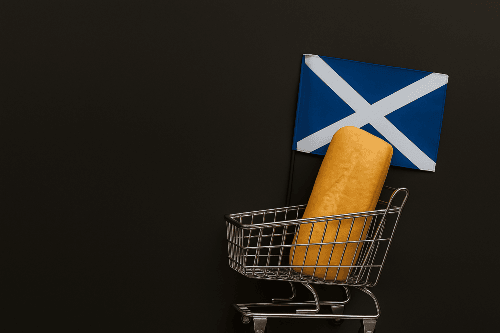Scotland’s Highlands are grappling with one of their busiest summers in memory as the “coolcation” trend — holidays taken in milder climates to escape extreme southern European heat — drives a surge in visitor numbers. The influx is proving a double-edged sword for grocers and distributors, with food and drink supply chains under mounting strain.
Tourism Surge Meets Rural Logistics
VisitScotland reports a 12% rise in overnight stays in the Highlands compared with summer 2024, with Skye, the Outer Hebrides, and Lochaber leading growth. Hotels, B&Bs, and self-catering cottages are near capacity during July and August, while day-tripper traffic has risen sharply.
Local supermarkets and convenience stores have seen demand for everyday groceries jump by as much as 20% on peak weekends, according to industry figures cited by BBC Scotland. But with distribution already challenged by geography — single-track roads, ferry links, and limited warehousing — the system is struggling to cope.
CalMac, the state-owned ferry operator, confirmed that technical issues on several vessels and weather disruptions in late July cut capacity on key west coast routes, delaying deliveries of fresh produce and chilled foods. Shelf gaps in categories such as fruit, dairy, and bottled water were widely reported.
Shopper Expectations vs Supply Reality
For retailers, the tension is clear. Urban consumers increasingly expect seamless availability, and tourists bring those expectations north. But Highlands logistics remain structurally expensive and fragile. According to Kantar Worldpanel, grocery price inflation in Scotland stood at 2.9% in July — below the UK average of 3.5% — but rural delivery costs risk eroding that advantage.
The Grocer has previously reported that seasonal demand surges in Cornwall and the Lake District can lift local supermarket volumes by up to 30% in peak summer, often forcing chains to add temporary warehousing and contract fleets. The Highlands are now facing similar pressures, without the same depth of infrastructure.
A Highland Council spokesperson told the BBC that increased visitor numbers are “hugely positive for the economy” but acknowledged that “supply resilience, particularly to islands, needs urgent investment if growth is to remain sustainable.”
Local Businesses Caught in the Middle
Independent shopkeepers say they are bearing the brunt. The Scottish Grocers Federation noted that many community stores rely on just one or two weekly deliveries. Missed ferries or driver shortages mean empty fridges for days. Rising transport costs — fuel, wages, and compliance with new environmental standards — further squeeze margins.
Meanwhile, hospitality operators warn that shortages of basics such as bread, milk, and bottled water can damage visitor perceptions. “We sell the Highlands as a world-class destination,” one hotelier told The Herald. “But if guests can’t get everyday essentials, it undermines the experience.”
Wider Context: Climate and Consumer Trends
The coolcation boom is not unique to Scotland. Climate analysts note that northern destinations from Iceland to Scandinavia are seeing record demand as southern Europe faces heatwaves, droughts, and wildfires. For UK retailers, this marks a structural shift: tourism no longer simply follows school holidays or cheap flights, but climate resilience.
ONS travel data shows that overseas visitors to Scotland climbed 14% year-on-year in early 2025, with US and German tourists leading the trend. Domestic “staycations” have also held strong post-pandemic, reinforcing pressure on local supply chains.
GSN Analysis
GSN analysis: The Highland crunch illustrates how UK grocers face a new class of demand shock — climate-driven tourism. Supply resilience in remote areas will increasingly matter as part of national brand reputation. Retailers that can adapt with flexible warehousing, local supplier partnerships, and diversified transport will protect both margins and customer trust.
The Highlands’ experience also offers a warning: infrastructure lag risks undermining the very “destination economy” Scotland promotes. Cornwall, Cumbria, and Wales have already seen how seasonal demand can stretch supply. For Scotland, resolving the ferry bottleneck and investing in cold-chain logistics may determine whether the coolcation boom is remembered as a long-term growth story or a missed opportunity.



